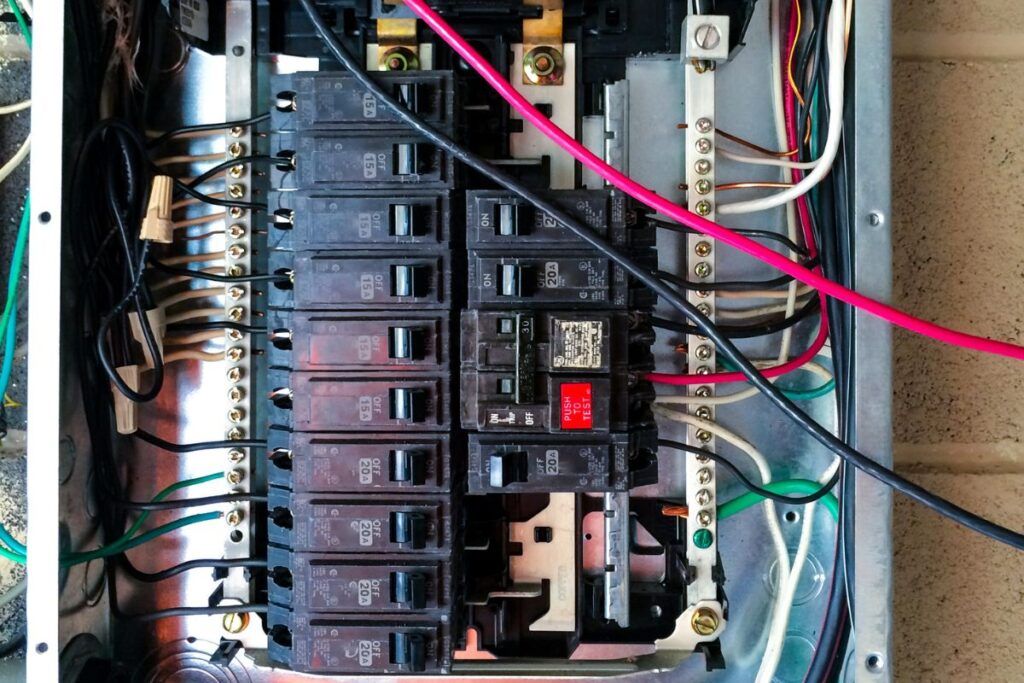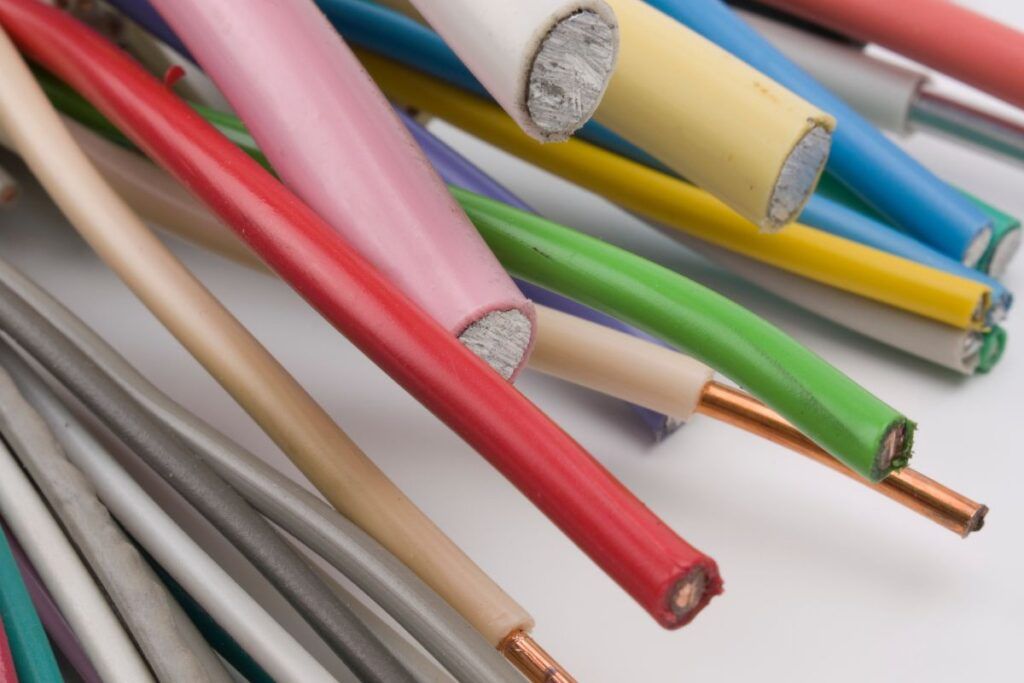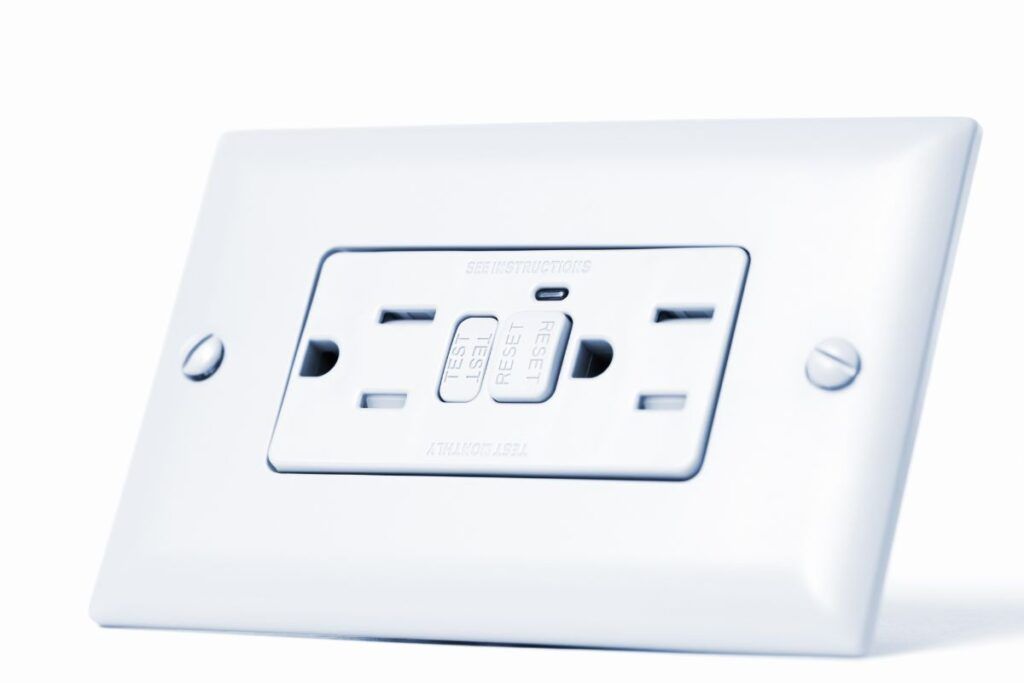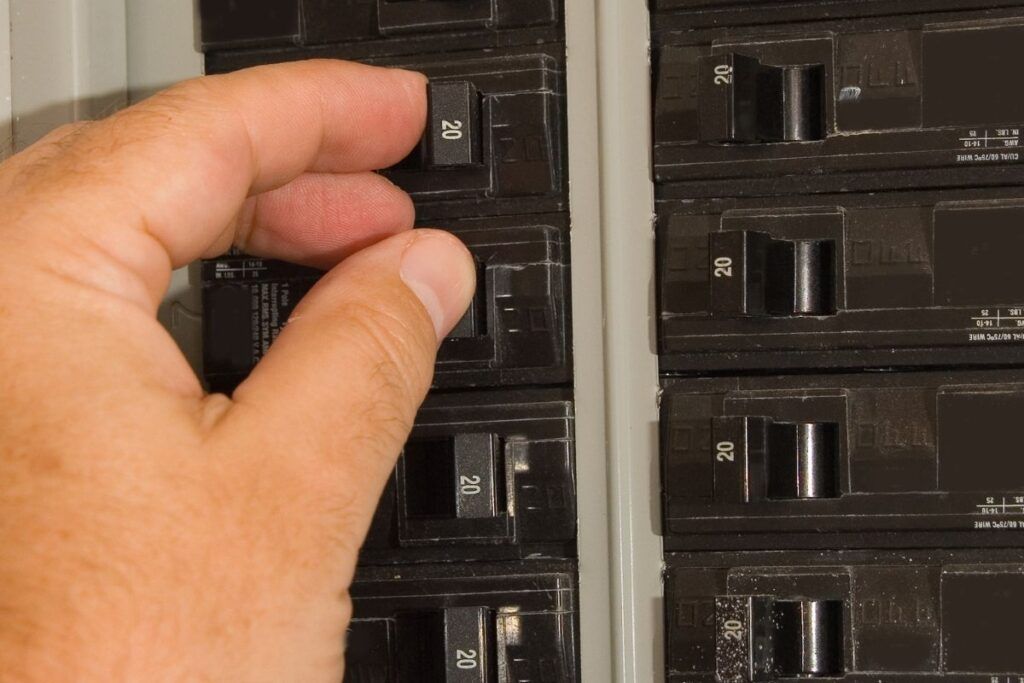Swimming pools at our home are quite entertaining. There are many pools with different dimensions. To add equipment in the pool area, you need the correct size of subpanel that can handle them.
Using 100 Amps with 20 space subpanels for your pool is recommended as it provides a scope to expand in the future. Pool generally multiple size breakers for lighting, heaters, pumps, chlorinators, and other gadgets, so going with a larger size panel will prevent future hassles.
Along with the sub-panel size, you must consider the main breaker panel of your house. The Thai guide will help you know the different sub-panel sizes for the swimming pools and the cost of installing the panel.

Check out our list of top-handpicked products for all your electrical, appliance, and HVAC system needs to keep your home running smoothly.
This post includes some affiliate links.What is a subpanel?
A sub-panel is generally a small service panel installed downstream from the main breaker panel in the house.
The panel is installed in different house sections, like the workshop, shed, basement, swimming pool area, etc.
To set up a sub-panel and wire it from the main breaker, you must determine the right sub-panel size for the particular section.
It should be able to handle the electricity in that particular area of your house.
The rated capacity of the sub-panel must not exceed the maximum amount of power used by the different appliances, outlets, and receptacles installed in the area.
Does a pool need a subpanel?
While including a pool in a house, the pool area will need a lot of equipment, like lights, a pool heater, a pump, water lines, a salt cell for chlorinated water, and many more.
Some like to add a mini fridge near the pool area.
The panel supplies electricity to the pool area for the equipment you add, for example, the lights, water pump, heater, and other things.
So, adding a sub panel in the swimming pool area will be a clear and convenient way to wire for the pool equipment.
Though you can have an indoor subpanel, an outdoor subpanel will last much longer and even stay fine during winter.
For that, you can use a subpanel load center in a NEMA 3R enclosure, watertight conduit or raceway, and fittings for the outdoor runs using a THWN in the conduit.
What size of subpanel do I need for the pool?

The size of the subpanel depends on the equipment you can install in the pooling area.
Some people use only a few necessary appliances like the water return line, filter, chlorinated water cells, lights, etc.
A 20 to 60 amp sub panel is enough for a pool area.
Some experts suggest installing a 20 amp subpanel for the pool area if there is little equipment.
A 60 amp sub panel is plenty of power.
You can install it if you have much equipment in your pool area, especially if you use a VS pump.
Some people also suggest using a 40 or 50-amp subpanel breaker.
You can also install a 20 or 30-amp sub-panel.
Sometimes, people introduce heavy equipment in the pooling area.
If you have a large heat pump, you can install 100 amps.
You can even add more equipment in the future.
The amp depends on the number of equipment you install in your pool area.
So, it can start with 20 amps and go up to 100 amps.
What size of wire do I need for wiring the subpanel?
The wire size will vary based on the amperage.
- If you have a 100 amp subpanel breaker, you can use a #3 gauge copper wire or #1 gauge aluminum wire.
- If you have a 50 or 60-amp subpanel, you can use wire sizes ranging between 6 AWG copper wire or 4 AWG wire. But, you have to increase if the distance exceeds 55 feet.
- You can use a 10 gauge copper wire for a 30 amp sub panel.
- You can use a 10 or 12-gauge wire for a 20 amp sub panel.
What size of breaker do I need for the pool?

Generally, a pool requires a 20 amp breaker.
But the amp will vary depending on the number of equipment you have in your pool.
If you want large pump heaters or mini-fridges, you might require a higher amp, like a 100 or 150-amp circuit breaker.
To determine the right breaker size for your pool, you must know the amp used by the equipment you plan on adding.
- Below is a list of equipment and its amp load:
- Most pool pumps with 120 volts will run safely at 20 amps.
- A pool saltwater cell releasing chlorinated water will use 6 amps to run.
- Pool heaters need 120 volts. So, they require at least 50-100 amps to run.
- Pool lighting needs 12 volts and 3.5 watts to light up. They are very low consumers and take up only 1-1.5 amps to function.
- The hot tubs need 50-100 amps and 120 volts to function.
As you can see, you need to calculate the amperes of the equipment in the pool and then decide the right breaker size for your pool area.
There are generally two common types of swimming pools – in-ground and above-the-ground.
A normal above-the-ground pool requires a minimum 20 amp breaker.
On the contrary, the in-ground requires a 30-40 amp breaker as they have other electrical equipment like the salt cells for chlorinated water and pool lights.
Adding large heaters or fridges will require higher amps, like 200 or 300 amps.
Wire size of pool’s main panel breaker?

Since the amps are different, you will need different wire sizes.
The above-the-ground swimming pool will do fine in a 20 amp breaker.
The pumps of the pool are often available at 120 volts.
So, they will smoothly run with a 12 or 10-gauge wire.
On the other hand, the in-ground pool pumps work a bit differently.
Though the pool can run with a 20 amp circuit, house owners prefer upgrading it when they add extra equipment that exceeds the MCL of the breaker.
In-ground pools have a salt cell for chlorinated water, pool lights, and a pump.
The salt cell will use 5-8 amps, pool lights use 3.5 watts, and the pump will use 10 amps.
So, you need to install at least a 30 amp breaker to cover the equipment load.
For that, you need a 10 gauge wire to run the breaker.
The circuit size may be higher depending on the number of equipment you have.
You can manage this by installing a separate sub-panel with 100 amps.
In that case, you need a thicker gauge.
However, you should consult the electrician for the best suggestions.
Should I use GFCI protection for the pool?

Experts suggest using GFCI outlets and breakers for the pool area.
GFCI stands for Ground Fault Interrupter Circuit.
These are specially made for areas with high moisture, like the basement, kitchen, bathroom, and pool.
GFCIs have a highly responsive feature that reacts to excessive moisture.
They will trip off whenever the outlet or breaker suspects a short circuit or other issues, especially related to moisture.
Tripping prevents severe electrical accidents.
According to the NEC (National Electric Code), the outlet feeding the pump and other pool equipment must be a GFCI.
Otherwise, building code violations will arise.
You can choose either a GFCI breaker or the outlet.
Everything will be perfect if your pool’s breaker and sub-panel sizes are correct.
Knowing the difference between the outlet and the breaker is important.
The outlet has ‘test’ and ‘reset’ buttons. You only need to press the ‘reset’ button.
But, in the case of the breaker, you have to reset it manually in the main electrical box.
What is the cost of installing a subpanel in the pool?

The cost to install a subpanel in the pool depends on the panel amp.
The distance between the panel and the pool also affects the price.
Larger pools will need a larger subpanel with extra cost.
A standard pool size near your house will cost you $450.
But, a pool far from your house will take nearly $4,000.
Generally, breaker installation costs $150 to $250 if the pool is standard size.
If the pool is large, you need a sub-panel.
That will cost around $350 to $550, but varies based on the location, for example:
- National cost -$1,186
- Average cost – $534 to $1,938
- Minimum cost – $125
- Maximum cost – $3,500
According to the amperage, the subpanel breaker cost will be:
- 20 to 30 amp – $10 to $15
- 50 amp – $100
- 100 amp – $100 to $200
- 200 amp – $250 to $350
The total cost, including the breaker and the installation, sometimes breaks down among the laborers, subpanel shifting, permits, and other things.
- Labor – $50 to $100 per hour ( It takes 4-8 hours to install a subpanel. However, it depends on the laborers’ experience level and work speed)
- Permission – $50 to $300
- New wiring – $600 to $2,200
Now, you can calculate the subpanel installation cost by adding the amp cost and the other charges, i.e., labor, subpanel shift, permission, and new wires.
So, the roughly estimated cost for different amps of subpanel are:
- 20-30 amp – $710 to $715
- 50 amp – $1,000 to $2,000
- 100 amp – $1,200 to $2,000
- 200 amp – $2,000 to $3,000
The price may increase depending on the distance between the main breaker and the sub-panel.
The longer the distance, the higher the price.
Besides, running the lines underground from panel to pool will affect the cost due to trenching and conduits.
The cost for these two are:
- Trenching – $8 per linear foot
- Trench backfilling – $1.60 to $4.50 per linear foot
- Conduit – $12 to $17 per linear foot
- Excavator machine – $300-$500
The distance between the pool and the subpanel should be at least 20 feet.
If the panel is GFCI protected, the distance has to be at least 6 feet.
Why is it important to get a dedicated circuit for the pool pump?

It is necessary to have a dedicated circuit for a pool pump because they are power-hungry devices.
Other appliances sharing the same circuit connected to the pool will make the breaker trip frequently.
Besides, you may need to use the pool pump for 4-8 hours daily to clean the pool and then use it.
So, having a separate breaker will help the pool run smoothly, avoid overheating, and prevent constant tripping.
Extension cords are very bad for the pool pump.
If you want to use them, wait for the contractors to fix the power line with the GFCI.
But using these wires too much will strain the pump and overheat it.
Only the in-ground pools have such set-ups temporarily.
Final thoughts
Swimming pools are fun.
While having one, you must care about the breakers and subpanels.
The breaker and sub-panel size depend on the number of equipment used in the pool.
Generally, a 20 to 50-amp breaker and sub-panel will be fine for a pool.
6 to 10-gauge wires would work.
Suppose you have only a breaker, but your pool has equipment consuming too much power, like a large pool heater, in the pool.
In that case, you can manage it by installing a 100 amp sub panel.
The price depends on the amp size, labor cost, wires, trenching, and conduits.
Generally, the average installation ranges between $400 and $3,000.
FAQs
What size of breaker do I need for a subpanel?
If you have a sub panel, it means you want the breaker to feed the sub panel.
In that case, the subpanel size has to be the same or slightly smaller than the breaker.
So, if you have a 125 amp subpanel, you need a 125 amp breaker.
Should I use copper or aluminum?
You can use both, but most people prefer copper.
To replicate copper, you need an aluminum gauge twice the copper’s size.
For example, if you use 10 AWG copper, you need 6 or 8 AWG aluminum.
What type of conduit should I use?
You can either use galvanized metal or PVC Schedule 40.
The latter is preferred the most as it is lighter and has a concrete finish to protect the wires.
Reference: National Electrical Code, NEC Wire Table, Electrical wiring, Home wiring.

